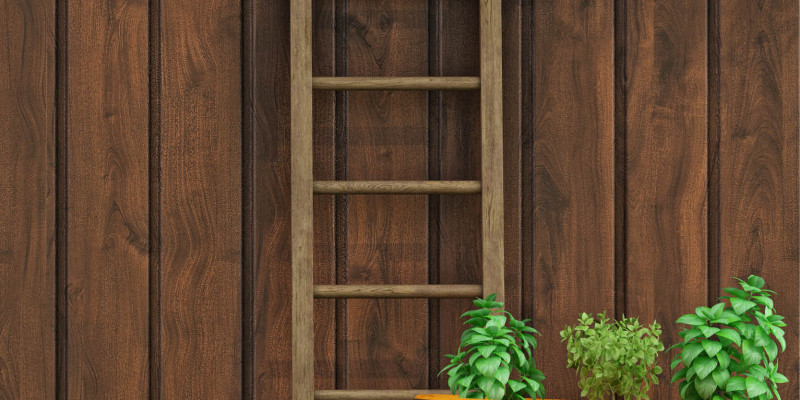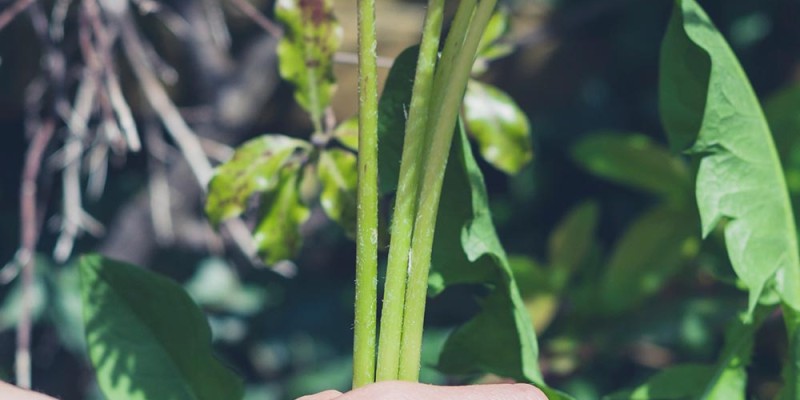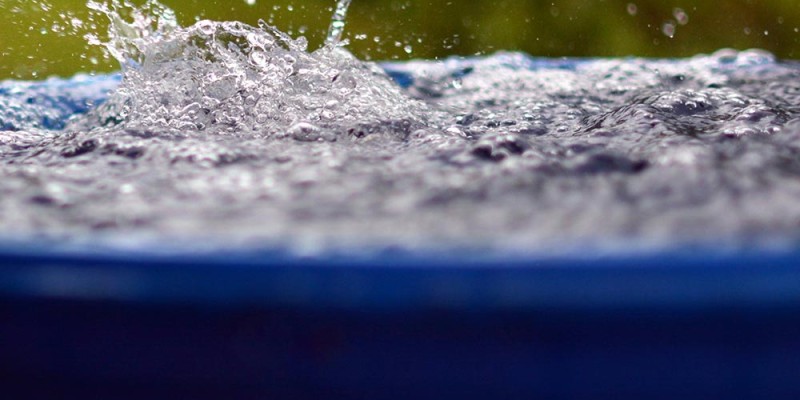How to build a rain barrel
Rain barrels are a great way to improve the sustainability of your garden. Capturing rain not only helps you get through periods with no rain but helps save money on your water bill. Today I am going to go through how I installed my rain barrel system.
You can purchase rain barrels from most big box stores however most product reviews complain of leaks and poorly functional systems. For this reason I have decided to build my own.
A full list of tools and materials can be found in the description below.
Selecting a location for a rain barrel is important. What you want to think of is ease of access for use in your garden but the catchment area of the roof.
I selected a down spout in my back yard that has a catchment of about 1/3 of my roof. This should allow me to catch a good amount of water even if the rain is light.
Building the Platform
I built a base that elevates the barrels allowing for easier access to the taps for my watering can and lets me place the tap lower on the barrel increasing the available water and pressure at which it goes through the tap.
Before we deal with the barrels preparing the site is important. My yard is not flat in this location so I had to cut out some of the soil in order to make a platform for my rain barrels.
I made sure the soil was mostly level.
After the soil is level I apply a bag of crushed sieved play sand. This will form a compact base for the concrete blocks that is less likely to move than simply clay. It will also allow for fast drainage of any water that ends up in the base.
Now that the ground is level it is time to build the base.
I have selected to use concrete products as they will not degrade over time and I will not have to worry about the bases integrity once the barrels are on top and full of water. Each barrel will weigh just under 450 pounds or 204 kilograms when full of rain.
Using the 24 inch or 60cm square pavement stones make sure they are level. Adjoining platforms do not need to be level with each other but it will help the final visual appearance.
Once the base paver is level it is time place the cinder blocks. The blocks will give me the desired height. I place them making sure the outside edges are lined up with the edge of the paver below. I placed all four blocks one on each side of the paver.
Once the cinder blocks are placed you can now place the top paver. This paver is where the barrels will sit.
Make sure to check one last time that the top paver is sitting level.
The base is complete and it is time to start working on the barrels.
Converting the Barrels
When looking for barrels to hold rain water I really wanted to repurpose one. When looking for a barrel to repurpose it is important that the plastic is food safe. That is not to say the barrels original use had to have been used for food, the barrels I found were used for windshield washer fluid. It is important to have food safe plastic as you will come in contact with the water and don’t want to be exposed to anything harmful.
There will be a stamp on usually the bottom of the barrel with three arrows forming a triangle with a number inside. If that number is 1, 2, 4, or 5 it is food safe. Additionally there may be a stamp that is a glass and fort with the words food grade below.
Once I got the two recycled barrels home I started by deciding where I wanted to cut the top of the barrel. I chose to cut a large enough hole that I could access the entire barrel. You can do the same with a much smaller hole if you wish.
I started by drilling a 2.5 cm or 1 inch hold in a location that will be cut away. I then used a reciprocating saw with a metal cutting blade to cut along the edge of the barrel to remove enough plastic for easy access. A jig saw will do a better job however mine was borrowed and has yet to be returned.
At this point it is important to clean the barrel out fully. I washed each barrel with my hose three times and upon visual inspection saw no residue before proceeding.
Installing Taps and Connectors
Once I had access it is time to drill the hole to install the tap. The lower the tap the more pressure the water will have when the barrel is full and the less in the bottom you cannot access. In order to find out how low I could place the tap I set the barrel on the base and marked the tap where the watering can could comfortably fit below.
The instructions that came with the tap recommended cutting a hole that was 1 1/8th of an inch (2.85cm) to install it. I cut a hole slightly smaller to allow me to file away any burs and fit the tap as snug as possible.
The best fittings for waterproof applications that will not leak are bulkhead fittings. For that you will need access to the back of the tap to screw the washer seal and bolt onto. By using a rubber washer on both sides and securing it the tap will be waterproof.
Any time when installing a screw where it will need to control water wrapping Teflon tape the opposite direction of the thread will help seal it.
I could reach into my barrel however if you start with a smaller hole at the top you can simply use some tape at the end of a stick to fit the bolt onto the back of the tap.
Once secure if you are only doing one barrel you can install it.
I however will be connecting another barrel to the system to increase my capacity to 400 liters or 105 us gallons. I installed a tap on the second barrel and now need to connect the two.
Installing barrel connectors
Having the increased barrel access makes it easier to install another bulk head fitting to connect more than one barrel. Although I only have two barrels right now if I need more capacity I can easily add others through the same process.
I have located the connection as high as possible on the barrels. As the first barrel fills the high connection point means there will be more water in it before it transfers to the second one. This means if only the first barrel is full there is more water pressure on the tap helping to fill my watering can faster.
The process to install the bulkhead fittings is the same as the taps.
Once the bulkhead fittings are installed at roughly the same height on facing sides of the barrels I built a connector that will be water tight as well. When purchasing the parts for this next step it is important to dry fit everything in the store to make sure it all fits together.
For this you will need a hose and a hose repair end. I simply dry fit the already threaded end into the first bulkhead fitting figure out how long of a hose is needed. Cutting the hose is fairly simple but it is important to keep the cut straight.
The hose repair end comes in two parts; the clamp which you slide over the hose before installing and the threaded which you insert the barbed end into the hose. Once the threaded end is inserted into the hose all of the way slide the clamp back over it and tighten it by turning each screw a few turns and then alternating to the next.
Thread the original screwed end into the first bulkhead fitting with Teflon tape and then the repaired end which can shift making it easier to screw in when the other side of the hose is immobile.
That should provide a water tight connection between the two barrels.
Installing the Downspout Diverter
In order to get the water to the barrels I have connected a down spout diverter. Diverters come in many designs often requiring you to cut all the way through the downspout to install. Systems like this are a little more difficult to protect come winter so I installed a diverter that I can remove easily.
As a side benefit the one I selected, after seeing it on the Late Bloomer Show, is much easier to install. Simply cut a hole in the downspout with the provided bit slightly higher than your barrels insert the catchment piece. I then marked the location for the screws that secure it. I did this so that I could drill some pilot holes for the screws. After reinserting the catchment piece and securing it with the provided screws the hose simply slips on the diverter and secure it in place with a hose clamp.
Place the other end of the hose in the rain barrel and you are set.
This set up will allow the water to back up into the down spout when the barrels are full. This eliminates the need so far for an overflow on the barrels themselves. I will watch throughout the summer and install an overflow if it is required.
Bug Netting
Now the only thing I have left to do is prevent insects like mosquitoes from laying their eggs in the water. For now I am just using some weed matting I had from another project and securing it with some vinyl string. After installing it I poked a small hole in the top to allow any water that collects on top to drain in but still keep out insects.
Later I will install mesh netting however I was unable to find some that would work in a small enough quantity.
Winterizing
Throughout the summer I will use the rain water over tap water to help improve the sustainability of my garden while saving some money on the water bill. When temperatures start to drop closer to the freezing mark in the fall I will disconnect the downspout diverter and install the plug that came with the kit. Once the garden no longer needs water or it freezes in the barrels I will empty them and put a cover that will not allow water into them. This will help protect the barrels and the fittings from freezing which will damage them.
If you would like to know if rain water is safe to use in the garden check out the episode on screen now.
Late Bloomer Show:


